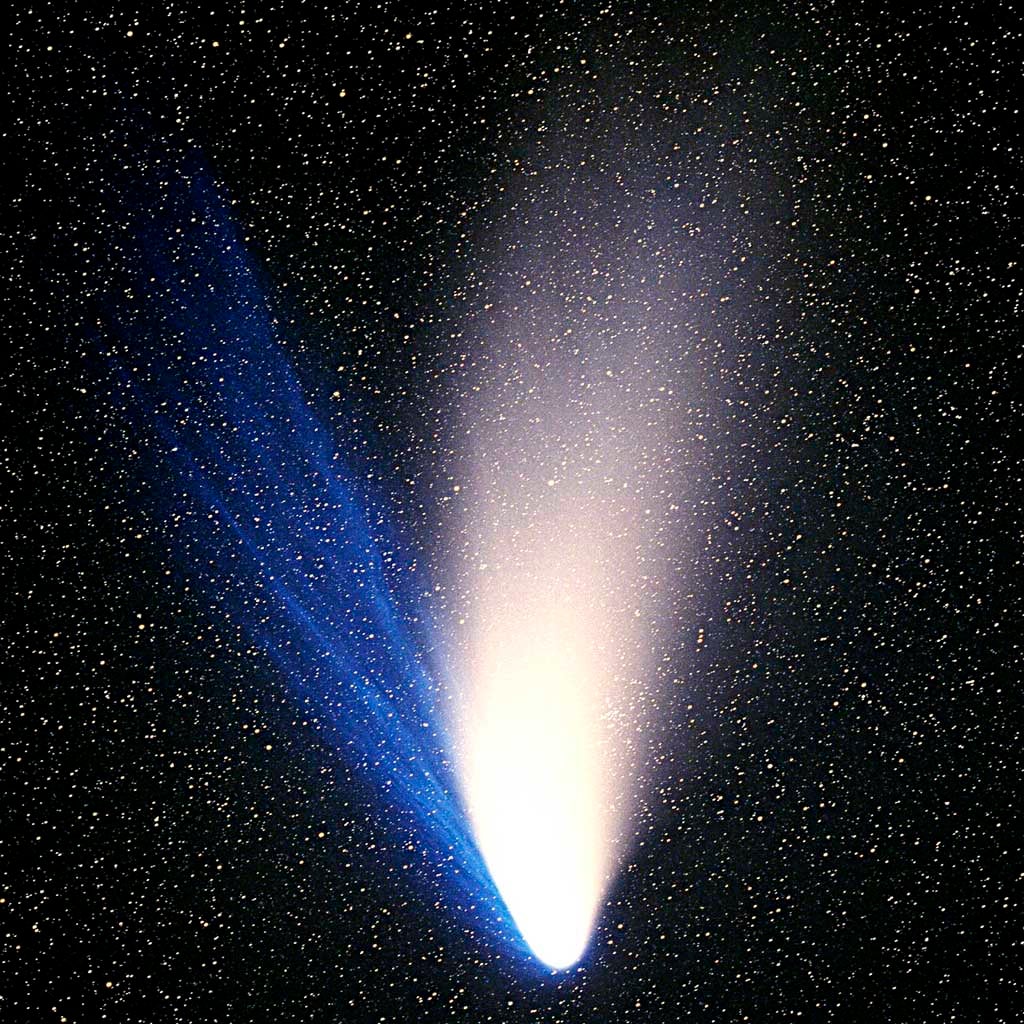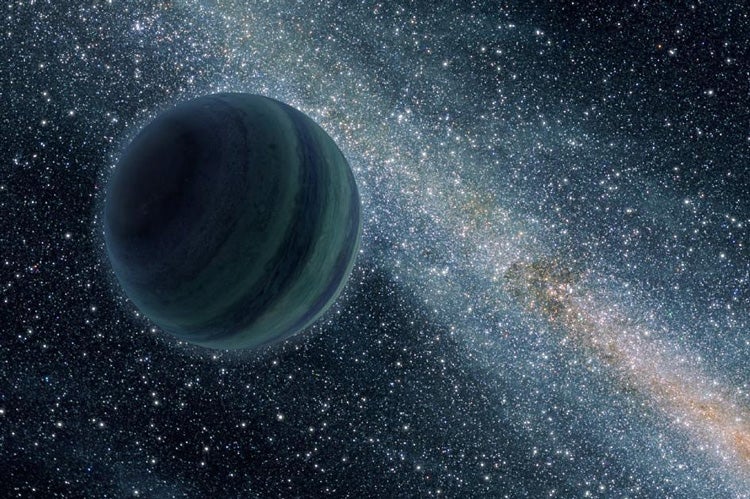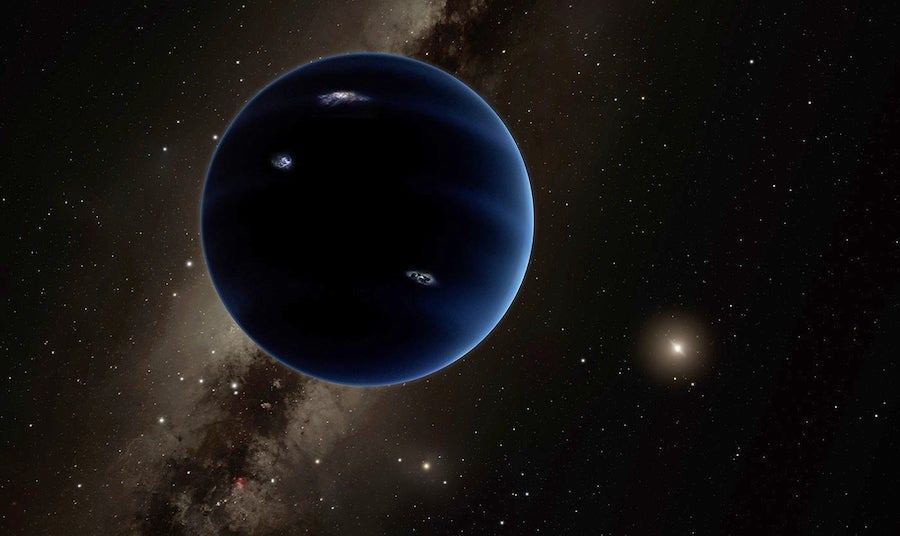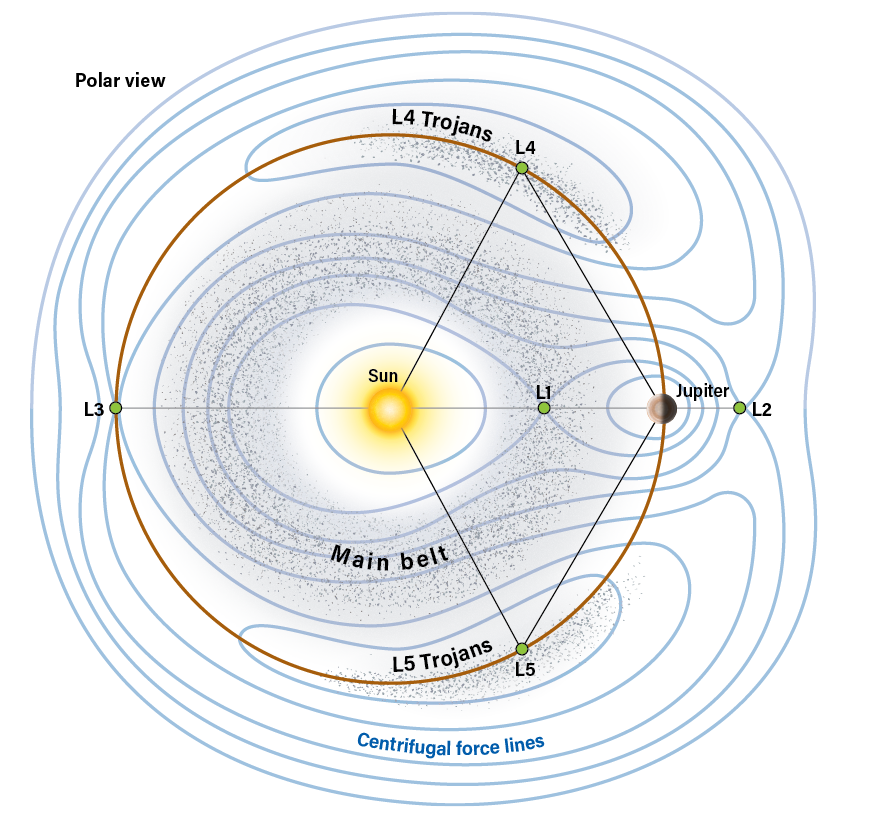It doesn’t matter whether C/2011 L4 swells to a bright, naked-eye object or fizzles into a stunning binocular or telescopic sight for you to succeed in this artistic exercise — as long as the comet displays decent tail structure. As of this writing, Comet PANSTARRS should achieve a maximum magnitude of –1.0 on March 9. But remember, comets are as predictable as cats.
Watch for tails
Comets generally display two primary tails: one made of dust and the other plasma (gas under extreme conditions). They’re most intense as they round the Sun, and the most luminous comets can stimulate the eye’s color-sensitive cones, allowing spectral shades to appear. If you do not observe color with the unaided eye, try looking through binoculars, then a telescope at the lowest power possible (this condenses the tail’s light, which maximizes your chances of seeing color).
If the comet looms close to the horizon, where atmospheric contaminants can scrub away the shorter wavelengths, the dust tail might appear ominously red, like the setting Sun. (Such a sight, combined with the dust tail’s curved nature, led early skywatchers to see them as bloodstained swords.)
In contrast, the plasma tail, which always points directly away from the Sun, contains carbon monoxide (CO) ions, which causes those gases to glow blue. The most abundant ion, CO+, emits radiation around 400 to 460 nanometers, in the blue part of the visible spectrum. But ion tails also may have cyanogen and diatomic carbon molecules, which both glow green when the Sun’s light energizes them.
Whatever colors you see depend partly on where the light falls onto the eye, which stimulates either your long-wavelength or short-wavelength receptors. It’s up to the brain, however, to collate this information and create a viable color solution — to make colors out of this. So there is no right or wrong, just what you see. That’s why it’s fun! By performing this exercise, we learn a little about how our eyes work and our brains think.
One way to document the differences is to create a numerical scale that everyone can agree on. For instance, you can record not only the color you see but also its intensity. When comparing notes with others, it’s important not to reveal the colors and intensity you detect until after everyone has completed observing. Otherwise, you run the risk of projecting your opinion onto others, which might sway what they see and think. Actually, that said, perhaps you should try sharing results after the first attempt and see if some people change their minds!
Good luck. As always, let me know what your eyes see and your brain thinks at someara@interpac.com.












